- • Requirements for the controlled devices
- • Dashboards, Zones, Categories
- • Simple thermostat with hysteresis
- • Simple Heating management using Weekly schedule and Presence switch
- • Power limiting
- • Notification on high temperature (DEPRECATED)
- • Configuring hysteresis control via Equation Smart Rule
- • PID Temperature regulation
- • PID Cascade
- • Regulation of Boiler Cascade
- • Equithermic regulation
- • Heating control in high electricity tariff via load management tariff indicator input
- • Heating and Cooling modes
- • Editing multiple devices at once
- • Setting the response speed of push buttons
- • Integrate multiple control units Core
- • Safe values
- • How to combine two daily schedules in one day
- • Linking devices together
- • Device log
- • Using statistic values in Smart Rules
- • Hot water circulation pump control
- • Exporting data from TapHome into Google Spreadsheet using Integromat
- • Exporting device descriptions
- • 2025
- • 2024
- • 2023
- • 2022.2
- • 2022.1
- • 2021.3
- • 2021.2
- • 2021.1
- • 2020.1
- • 2019.1
- • 2018.1
- • 2017.1 - Blinds automation - angle control update
- • 2017.1 - Blinds automation - Depth of sun rays
- • 2017.1 - Charts updated
- • 2017.1 - Core update from the app
- • 2017.1 - Double click and triple click
- • 2017.1 - Expose devices
- • 2017.1 - Multi-value switch
- • 2017.1 - Permissions
- • 2017.1 - Replace module action
- • 2017.1 - Set to Automatic mode - "Push buttons event" Smart Rule
- • 2017.1 – Daily schedule Smart Rule
- Documentation
- Smart Rules
- Smart Rules - Limiting Conditions
Smart Rules - Limiting Conditions
Each Smart Rule can be dynamically activated/bypassed by a specified limiting condition(s) defined inside the Smart Rule
Limiting condition visualisation
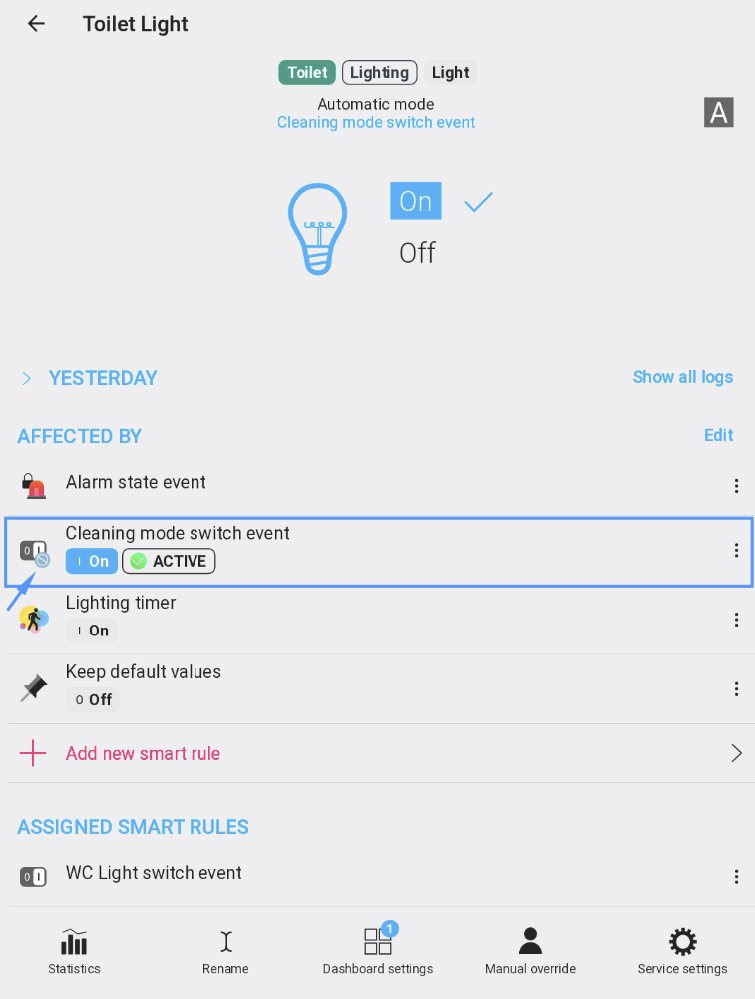

Limiting condition is met/active that means Smart Rule is working

Limiting condition is not met that means Smart Rule is bypassed
Limiting condition inside Smart Rule
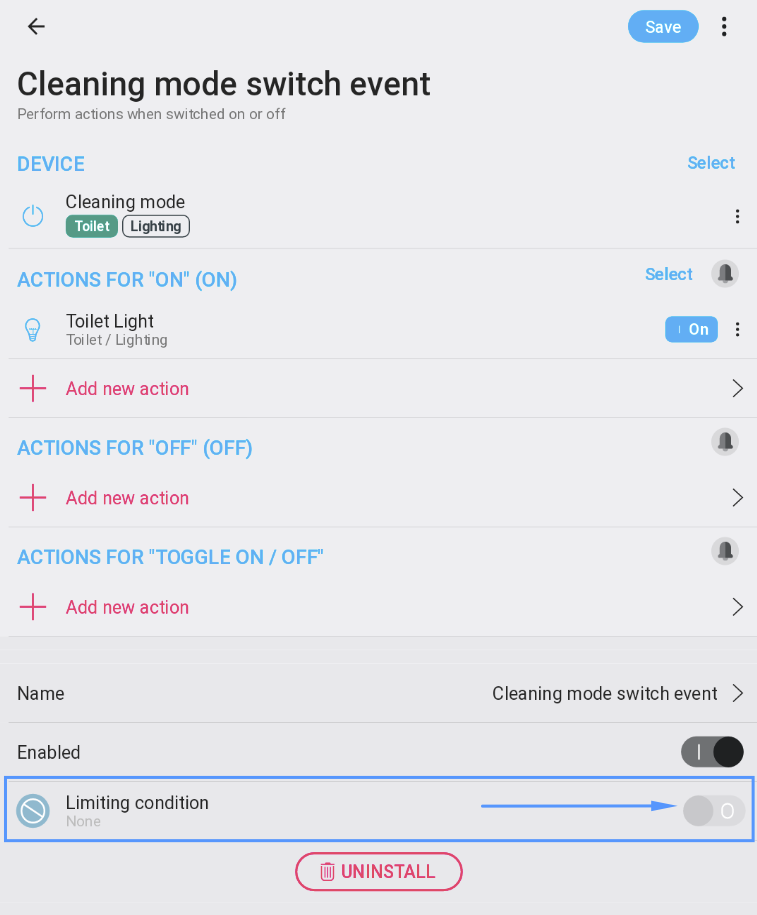
Limiting condition types
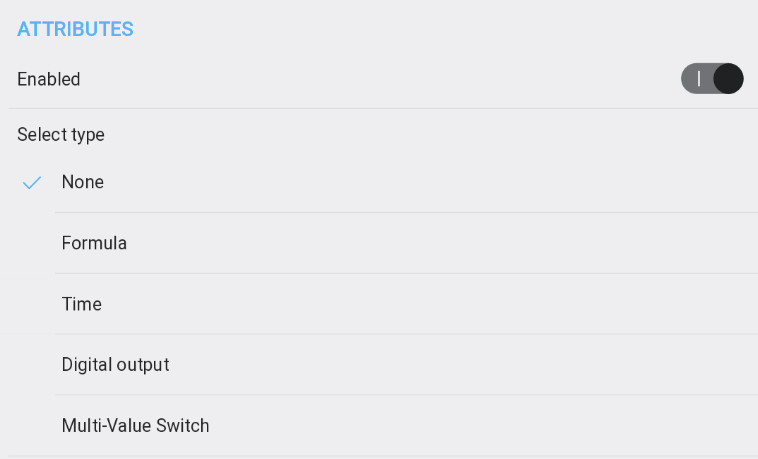
Formula
Formula allows you to limit Smart Rule activity by an Equation. It is the only type where you can use more than one variable
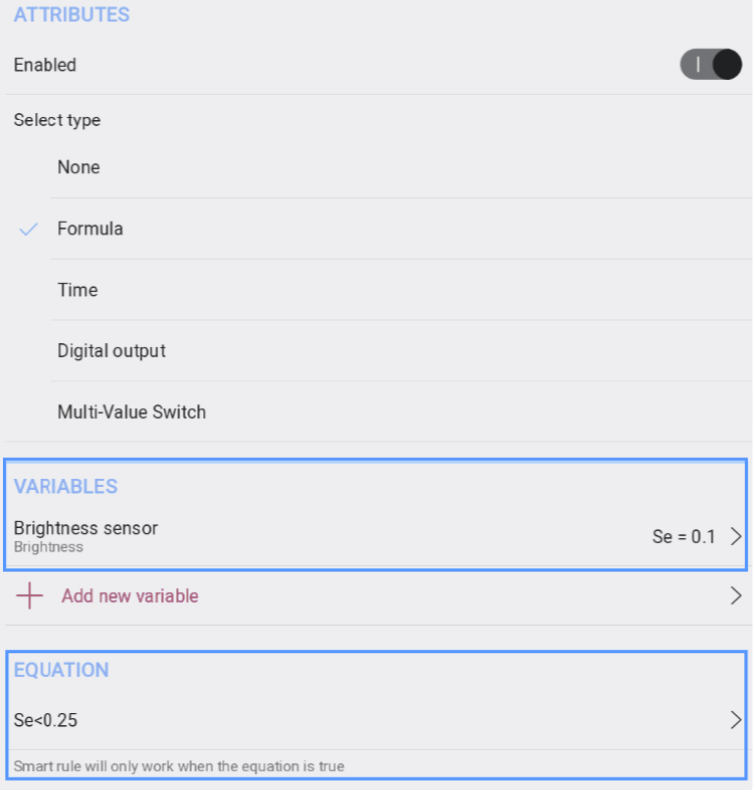
Variables
Selection of variables used in equation. Short names is are generated automatically by the system
Equation
True state of the equation activates the Smart Rule. False state bypasses the Smart Rule
Time
Time allows you to limit the Smart Rule activity by a specified time interval. 48h scale is used to cover also events that start in one day and end in another.
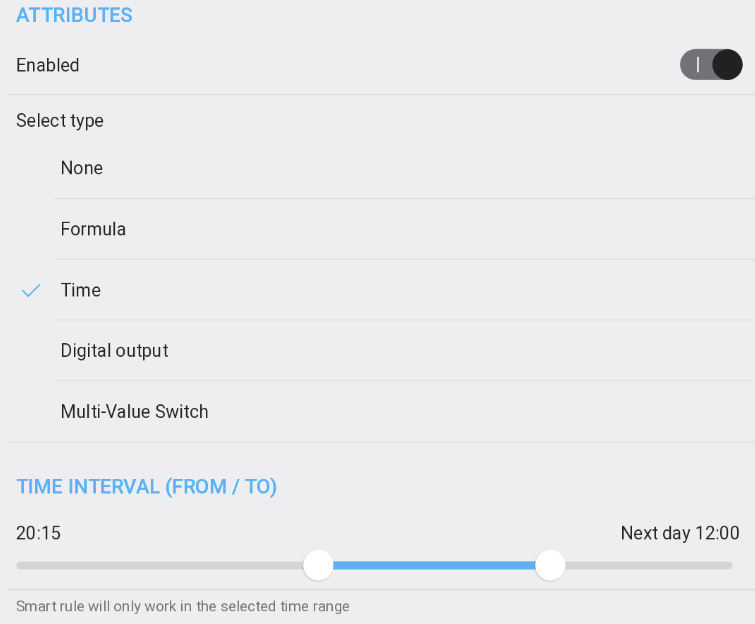
Time interval (From/To)
Scale starts 00:00 day 1 and ends day 3 00:00 which means 48 hours are covered
Digital output
Digital output allows you to limit the Smart Rule activity by a specified state (On or Off) of a Digital output (Switch).
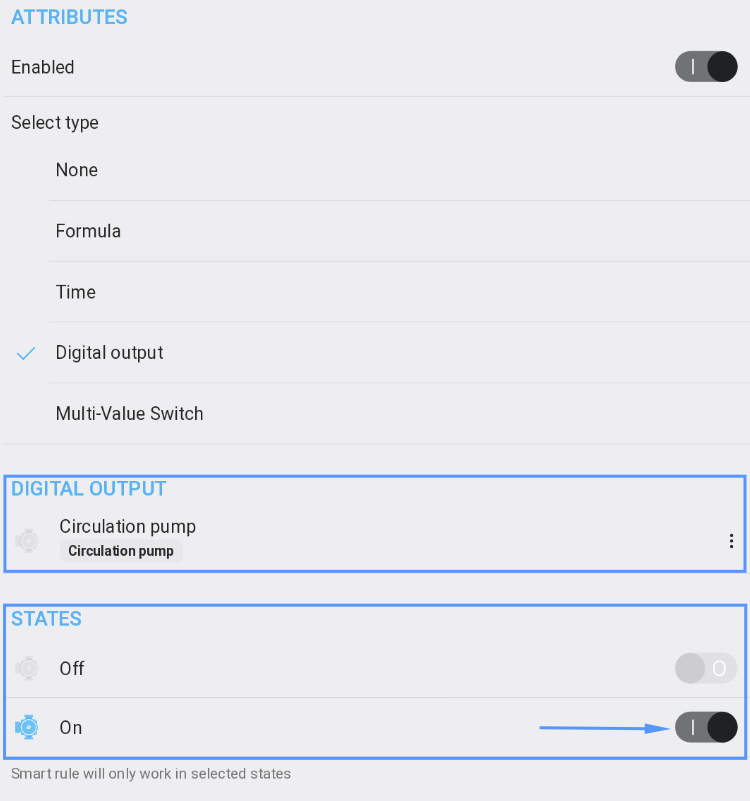
Digital output (On/Off)
Selected device
States
State(s) selection - Smart rule will only work in enabled states.
Multivalue switch
Multivalue switch allows you to limit the Smart Rule activity by a specified state(s) of a Multivalue switch.
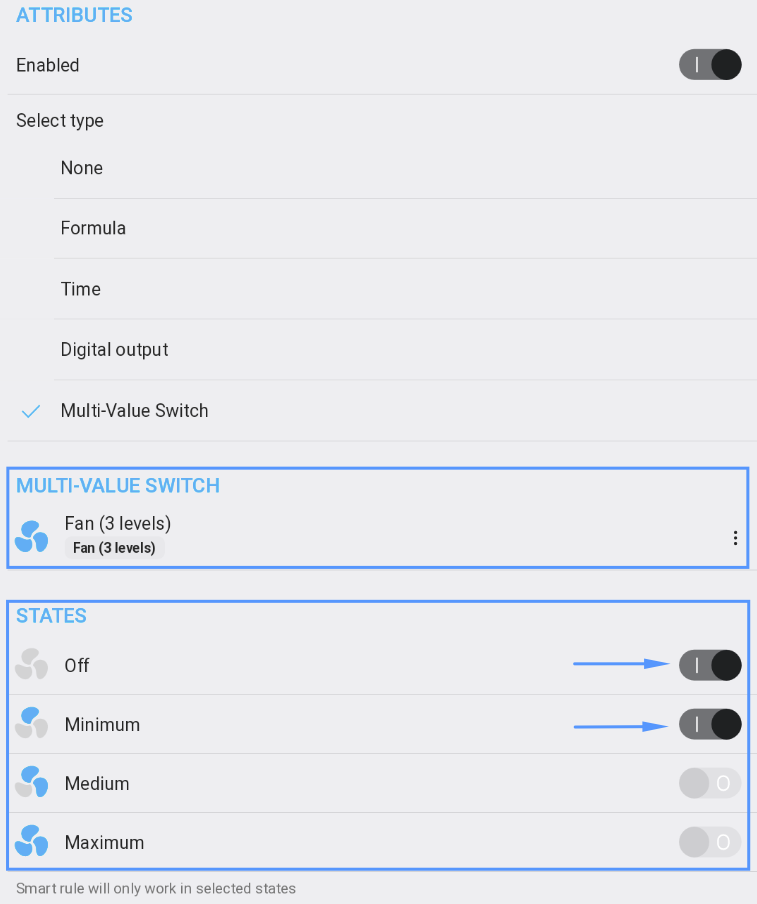
Selected device
States
State(s) selection - Smart Rule will only work in enabled states.
Keep in mind that bypassing Smart Rule via Limiting condition means that Smart Rule loses control over the output device immediately and is not able to get the control back until the Limiting condition is met again.